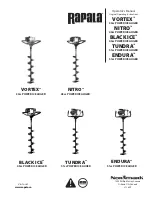
1-3
Shock Hazard -
Electrical shock hazard; do not remove covers. Refer to qualified service personnel.
Proning (using TriaDyne Proventa Proning Accessory Kit) -
Proning may present inherent risks of serious
injury. For instance, some studies and caregiver experience have suggested or reported risk of the following in
relation to proning in general:
• skin breakdown and / or pressure necrosis
• wound dehiscence
• cardiac arrest
• loss of invasive lines or tubes or extubation (endotracheal and oral)
• edema and / or swelling
• splenic rupture
• blindness and other consequences of damage to the ocular nerve
• corneal abrasion
• myositis ossification
• venous air embolism
• increased intraorbital pressure
• central retinal artery occlusion
• pain and discomfort
• difficulty performing CPR
Precautions may also need to be taken when using this product with certain patient conditions, including, but
not limited to:
• hemodynamic instability
• severe agitation
• uncontrollable claustrophobia or fear of confinement
• uncontrollable diarrhea
• intolerance to face down position
• any implant that potentially increases the risk of skin breakdown, including, but not limited to, breast
implants or penile prosthesis
• pregnancy
• patient in the prone position with open sternal wound or thoracic post-surgical incision
• patient in the prone position with open abdomen
• extensive facial trauma
• any other unstable fracture not listed in the
Contraindications
section
• ICP monitoring or intracranial drainage devices
Caregivers should make sure to discuss safety information, risks and precautions with
patient (or patient’s legal guardians) and patient’s family.
Safety Information
General Protocols -
Follow all applicable safety rules and institution protocols concerning patient and
caregiver safety.
Skin Care
- Monitor skin conditions regularly, especially at bony prominences and in areas where
incontinence and drainage occur or collect, and consider adjunct or alternative therapies for high acuity
patients. It is recommended that skin pressure points be assessed at least every two hours. Early intervention
may be essential to preventing serious skin breakdown.












































